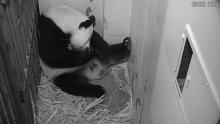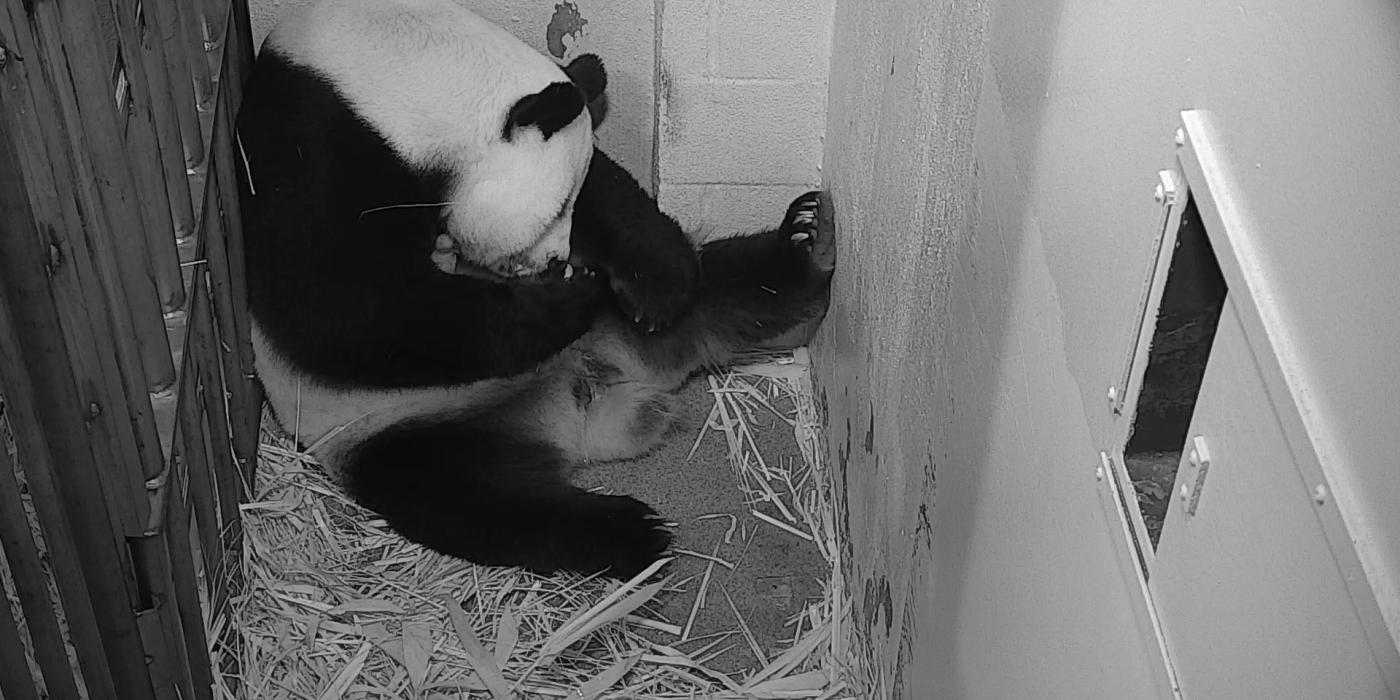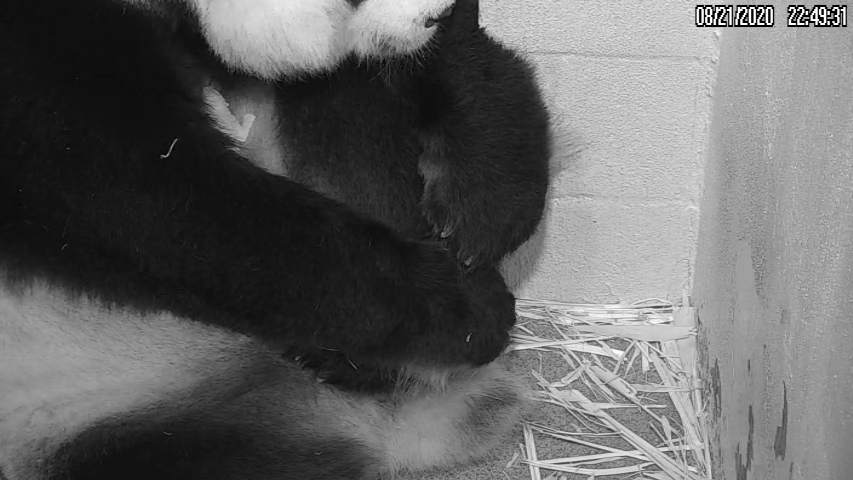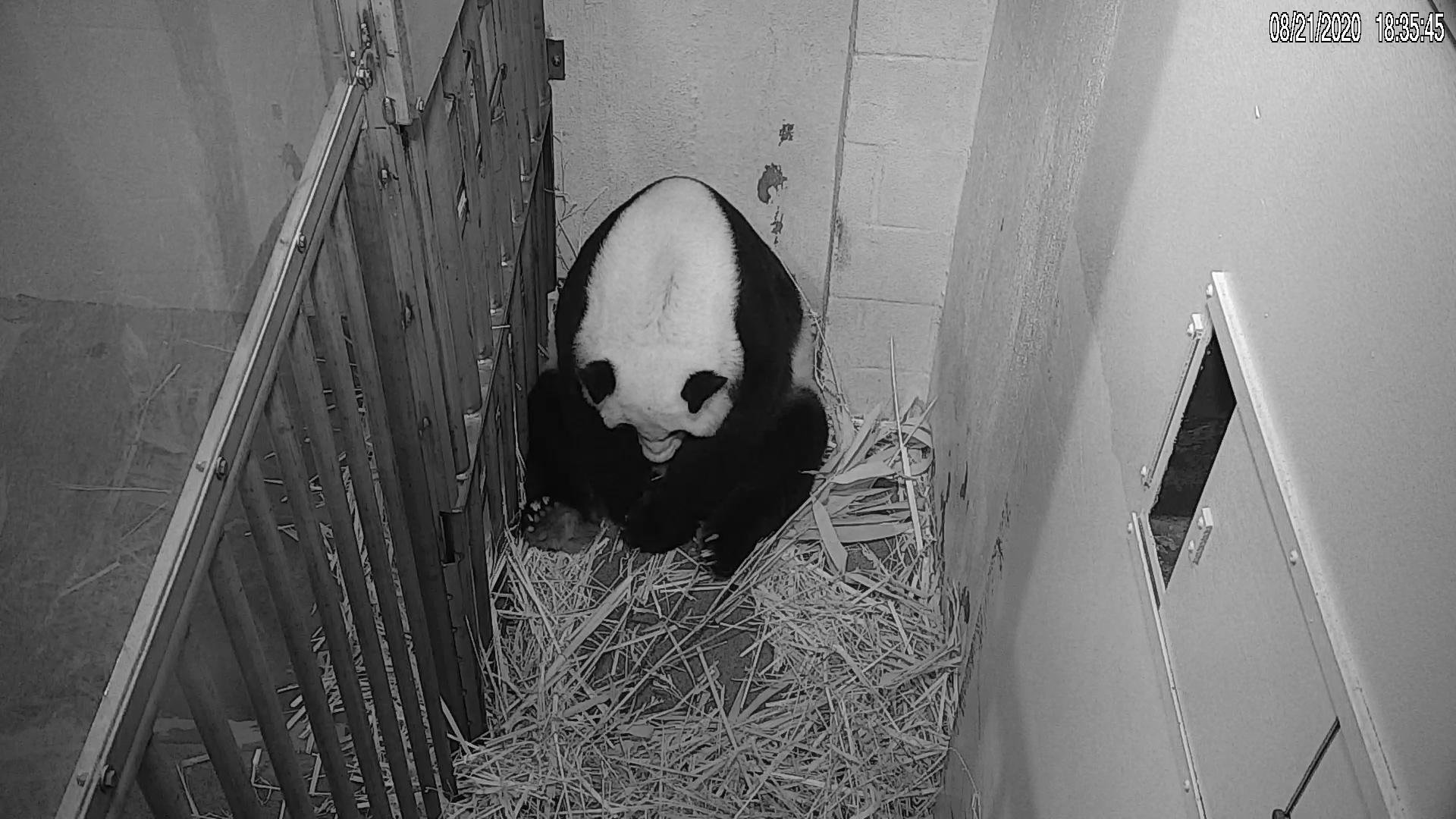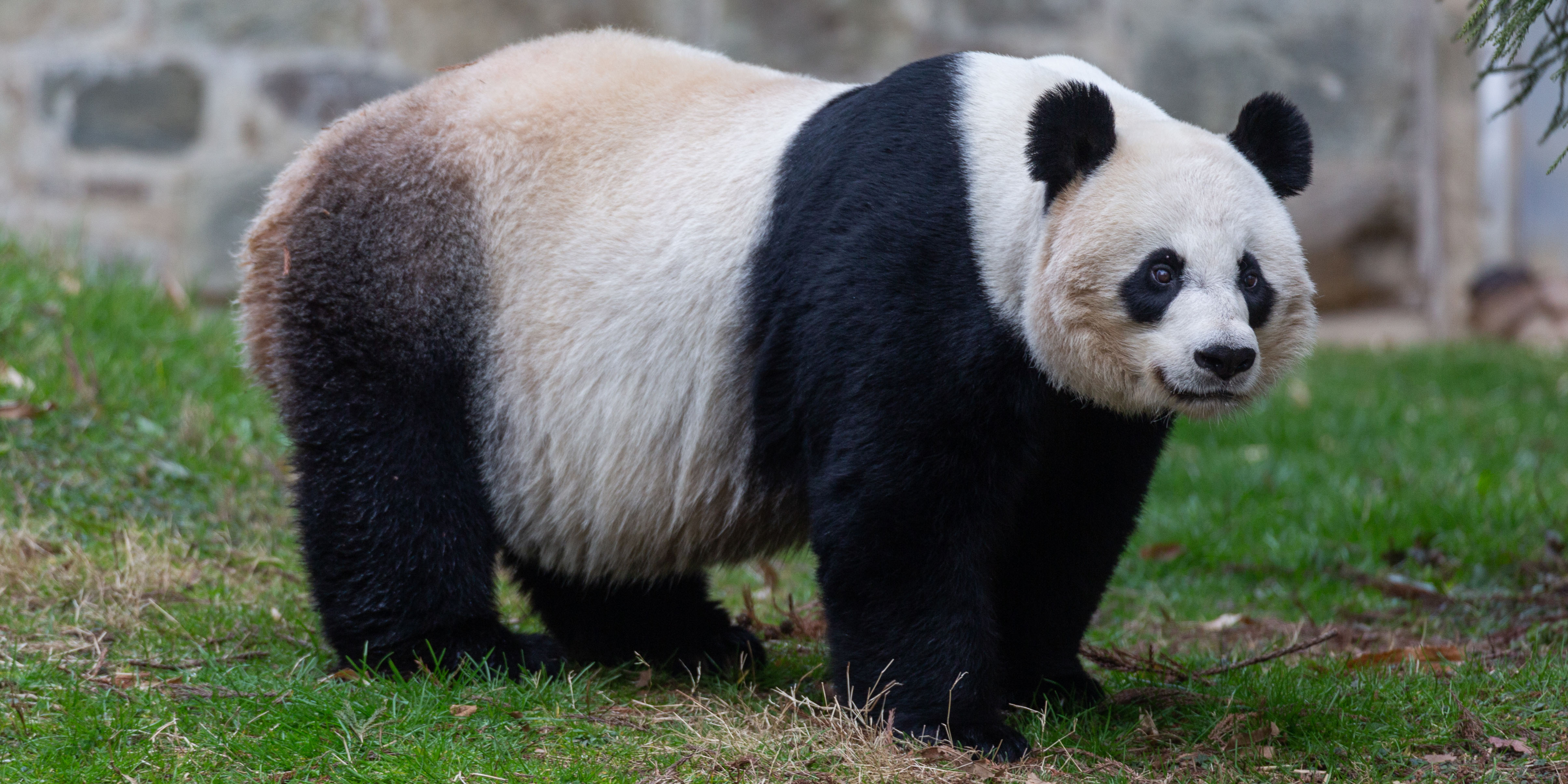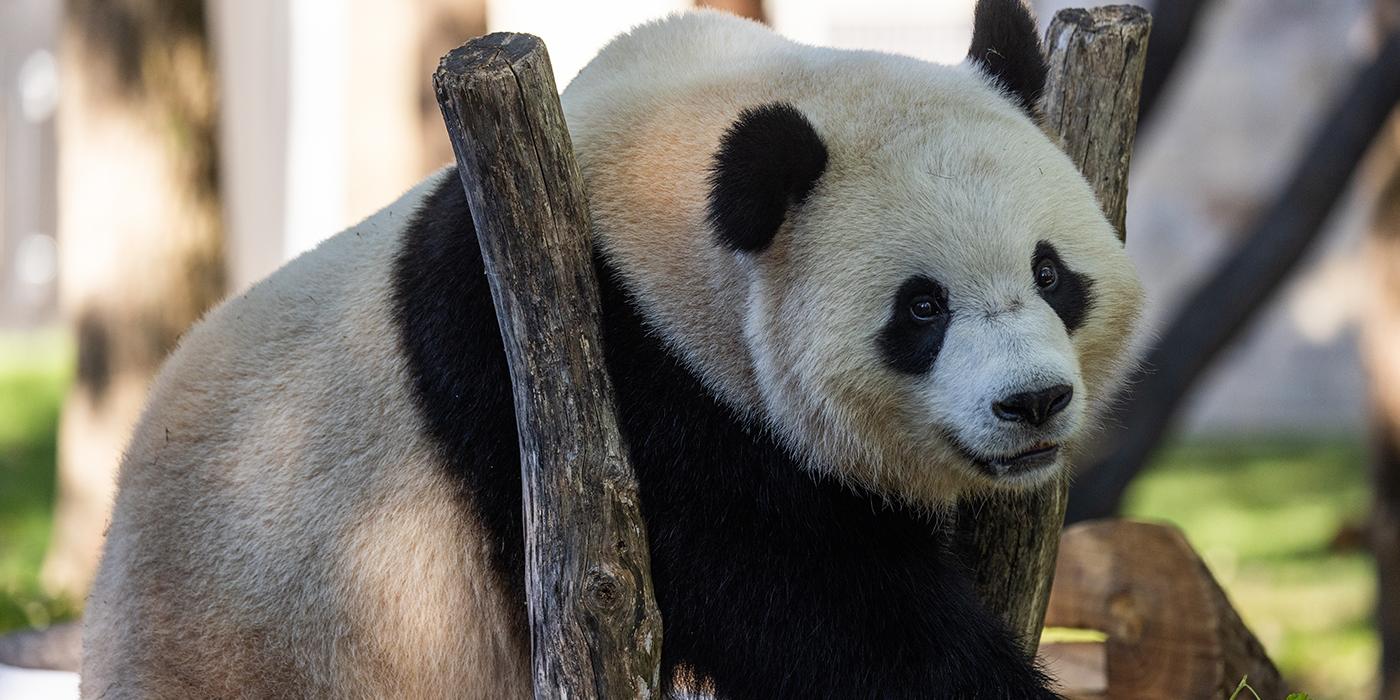Giant Panda Cub Born at Smithsonian’s National Zoo
B-Roll
Giant panda Mei Xiang (may-SHONG) gave birth to a cub at Smithsonian’s National Zoo today, Aug. 21. Animal care staff witnessed the birth at 6:35 p.m. Mei Xiang picked the cub up immediately and began cradling and caring for it. The panda team heard the cub vocalize and glimpsed the cub for the first time briefly immediately after the birth. They are monitoring Mei Xiang and her cub via the Zoo’s panda cams. A neonatal exam will be performed when keepers are able to retrieve the cub, which may take a few days. The sex of the cub will not be determined until a later date.
“Giant pandas are an international symbol of endangered wildlife and hope, and with the birth of this precious cub we are thrilled to offer the world a much-needed moment of pure joy,” said Steve Monfort, John and Adrienne Mars Director of the Smithsonian’s National Zoo and Conservation Biology Institute. “Because Mei Xiang is of advanced maternal age, we knew the chances of her having a cub were slim. However, we wanted to give her one more opportunity to contribute to her species’ survival. I am incredibly proud of our animal care and science teams, whose expertise in giant panda behavior was critical to this conservation success.”
Zoo veterinarians confirmed evidence of a fetus on an ultrasound Aug. 14 and Aug. 17. During the procedures, they saw clear images of a developing skeletal structure and strong blood flow within Mei Xiang’s uterus. It was a significant opportunity as Mei Xiang usually chooses not to participate in ultrasounds in the final weeks of her pregnancies and pseudopregnancies.
Female giant pandas are only in estrus, or able to become pregnant, for 24 to 72 hours each year. To determine the optimal time for artificial insemination, the Zoo’s expert team of panda keepers and a behavioral scientist closely watched Mei Xiang’s behavior, which is the best indicator, in addition to hormone analysis, that she has ovulated. These behaviors include an increase in positive vocalizations like bleats and chirps and walking backward with her tail up. Historically this behavior has tracked with peak estrogen and progesterone rise.
Reproductive scientists from the Smithsonian Conservation Biology Institute (SCBI) and Zoo veterinarians performed an artificial insemination on Mei Xiang March 22 with frozen semen collected from Tian Tian (tee-YEN tee-YEN). Mei Xiang turned 22 years old July 22. She is the oldest giant panda in the United States and the second oldest documented in the world to give birth. This is also the first time a Zoo in the United States has experienced a successful pregnancy and birth via artificial insemination using only frozen semen. Based on data from scientists in China and other zoos with pandas, females can breed into their early 20s. Tian Tian will turn 23 Aug. 27.
In late July, Mei Xiang exhibited behaviors consistent with pregnancy or pseudopregnancy. SCBI scientists confirmed that a secondary rise in Mei Xiang’s urinary progesterone levels began June 10. In the days leading up to parturition, Mei Xiang was sleeping more, eating less, nest-building and body licking.
The panda house at the David M. Rubenstein Family Giant Panda Habitat is currently closed to provide quiet for Mei Xiang and her cub. The panda team started a 24-hour-a-day behavior watch on the panda cams Aug. 14. As a public health precaution due to COVID-19, the Smithsonian’s National Zoo and Conservation Biology Institute has updated its hours and entry requirements.
Mei Xiang has given birth to three surviving cubs: Tai Shan (tie-SHON), Bao Bao (BOW BOW) and Bei Bei (BAY BAY). Tai Shan was born July 9, 2005, and moved to China February 2010. Bao Bao was born Aug. 23, 2013, and moved to China in February 2017. Bei Bei was born Aug. 22, 2015, and moved to China in November 2019. As part of the Zoo’s cooperative breeding agreement with the China Wildlife Conservation Association, all cubs born at the Zoo move to China when they are 4 years old. The Zoo’s current cooperative breeding agreement expires in December 2020.
The Zoo will continue to provide updates on Mei Xiang and her cub through Facebook, Twitter and Instagram using the hashtag #PandaStory, and the Giant Panda e-newsletter.
# # #
Related Species:
Image Gallery
